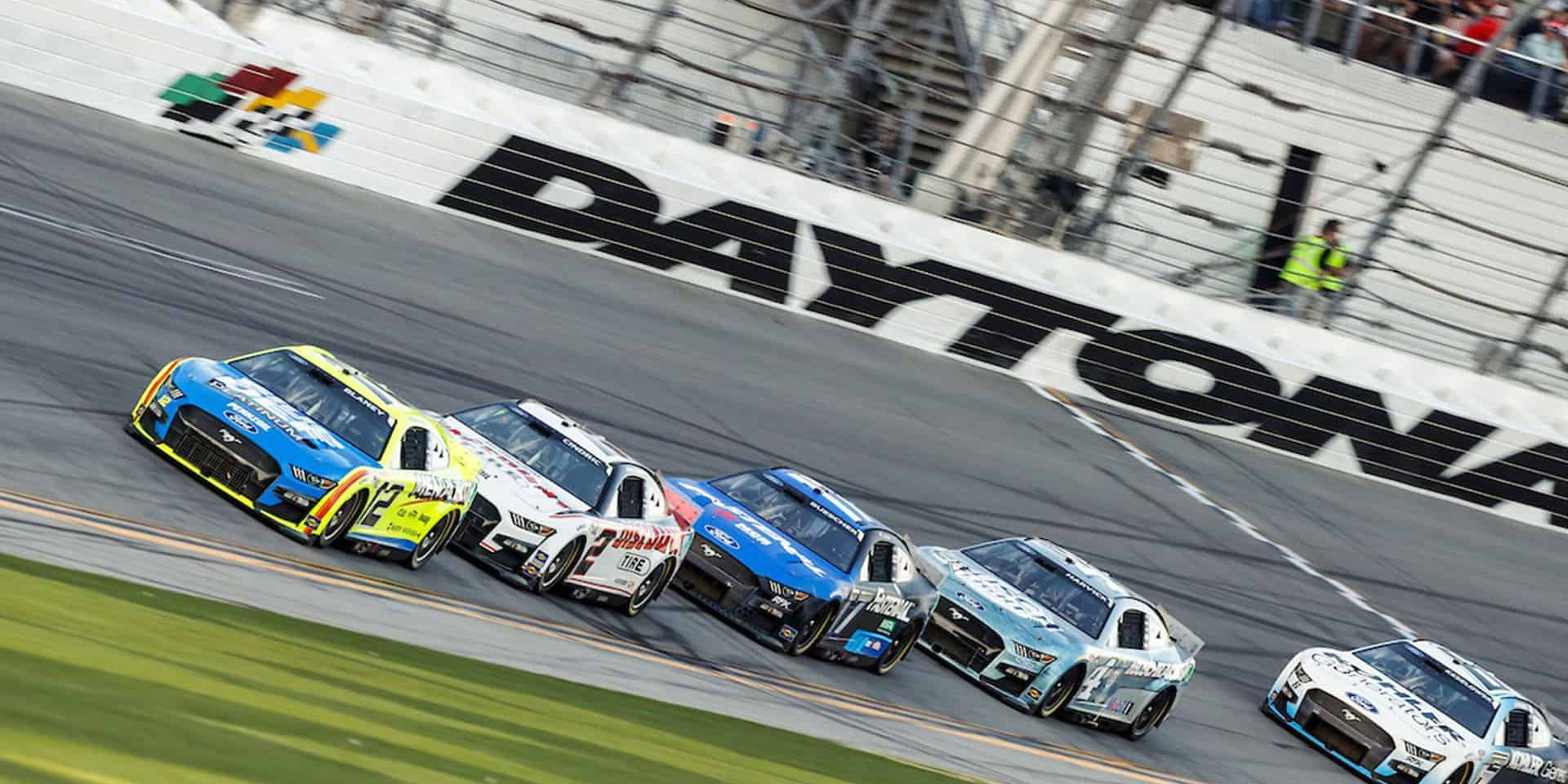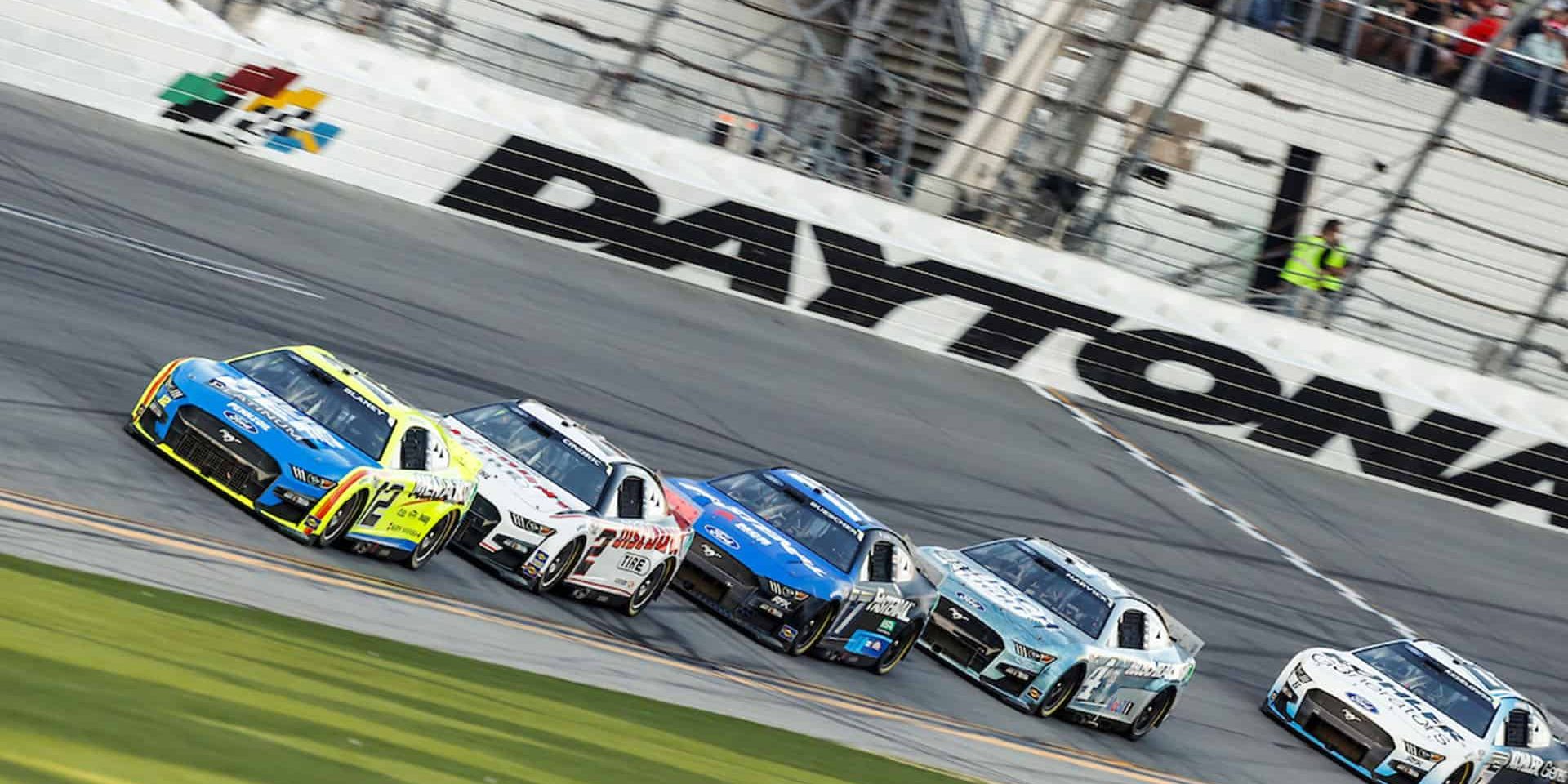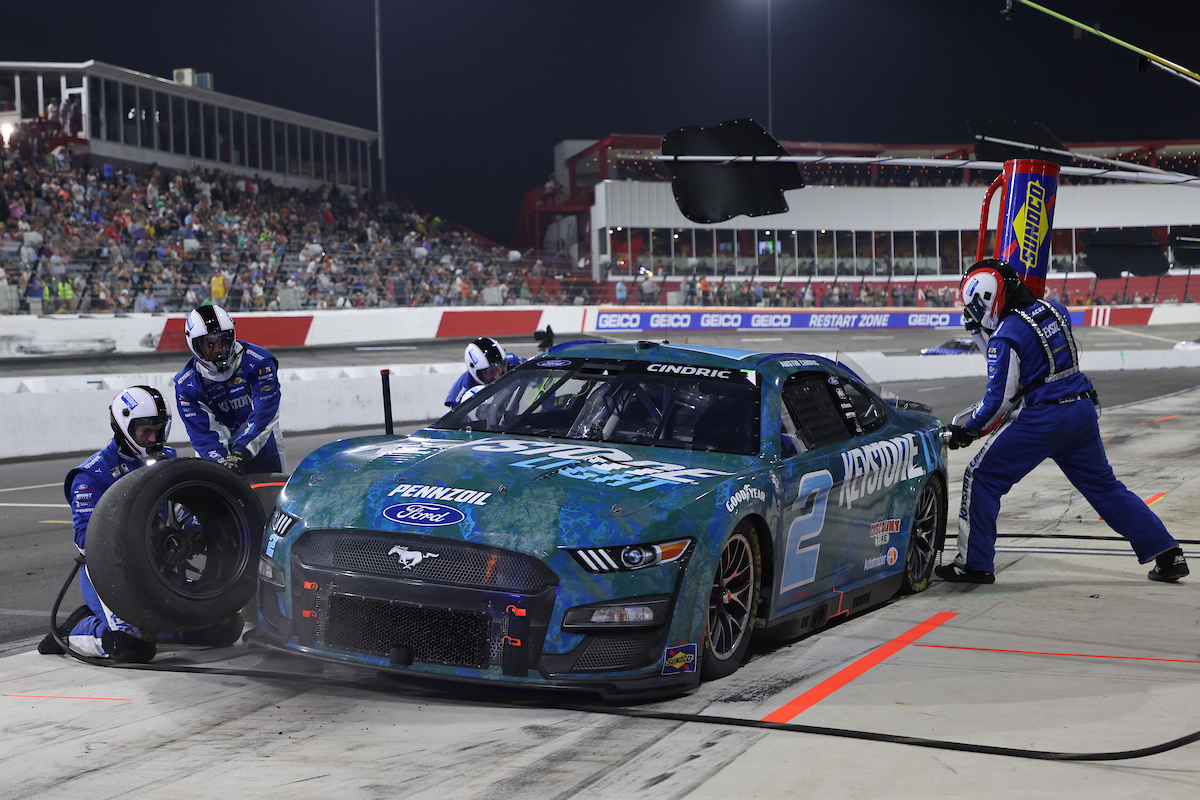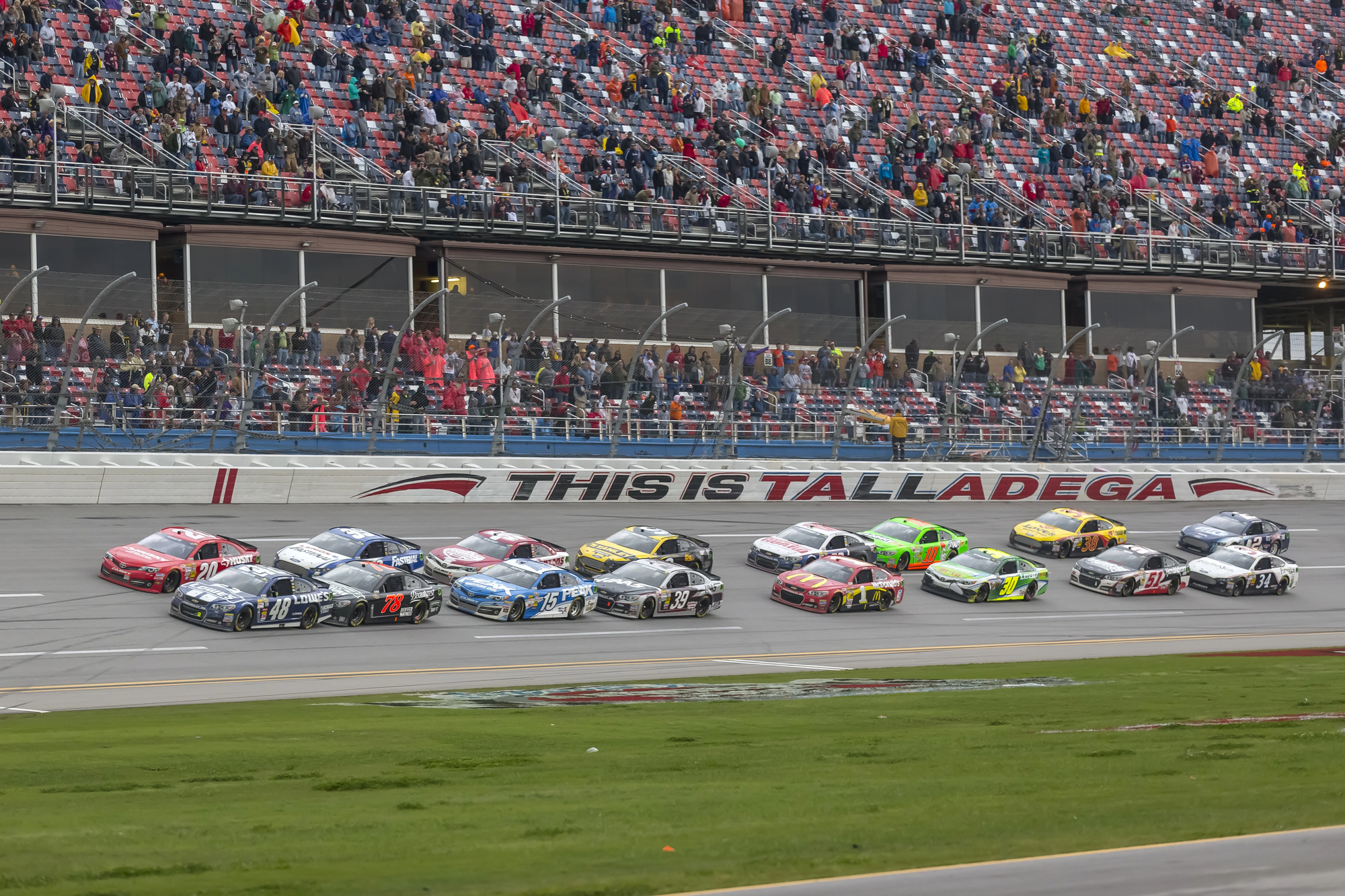How Long Is A NASCAR Race? Duration and Distance Breakdown


When considering the question “How long is a NASCAR race?”, it’s important to recognize that the duration can vary significantly. NASCAR races, part of the NASCAR Cup Series, range widely in length. These events are measured both in miles and in the time it takes to complete them.
The typical NASCAR race spans approximately 300 to 500 miles, translating into an event that lasts anywhere from 3 to 5 hours.
The precise length of a NASCAR race depends on several factors. These include the specific track being used, the type of race, and external conditions such as the weather. Shorter races, like the Bristol Dirt Race at 133.25 miles, can take less time, while the Charlotte race, the longest in the series at 600 miles, can extend well beyond the average span. Races are also subject to delays and extended durations caused by accidents, stoppages, and other interruptions.
Table of Contents
Key Takeaways
- NASCAR races vary in length from about 2.5 to 5 hours.
- Race length is influenced by the track, race type, and weather conditions.
- The longest NASCAR Cup Series race is the 600-mile event in Charlotte.
Basics of a NASCAR Race
This section provides an overview of the typical format and distances involved in NASCAR races, which vary in laps and miles based on the track.
Race Format
NASCAR races are divided into stages, which were introduced to increase competition and strategy. A complete race features three stages of competition, with opportunities for drivers to earn additional championship points at the conclusion of each stage apart from the race finish.
Common Distances
The length of NASCAR races can be quite diverse, usually determined by the track configuration and the race itself.
- Short Tracks: Typically under 1 mile, with higher lap counts due to the shorter circuit distance.
- Intermediate Tracks: Often measure between 1 to 2 miles, balancing lap count and distance for mid-range races.
- Superspeedways: Can exceed 2.5 miles, featuring fewer laps but longer total distance and higher speeds.
The total distance of NASCAR races usually ranges from 125 to 600 miles, affecting the race’s duration and strategy. For example, the Bristol Dirt Race covers a distance of 133.25 miles, while the Charlotte race spans up to 600 miles.
Notable NASCAR Races
NASCAR showcases numerous races throughout its season, but some events stand out due to their history, distance, and the challenge they pose to drivers and teams.
Daytona 500
The Daytona 500 is often referred to as “The Great American Race” and serves as the premiere event on the NASCAR calendar. This race spans 500 miles and is held annually at the Daytona International Speedway in Florida. An iconic track, the Daytona International Speedway provides a challenging high-speed, high-bank oval where skill and strategy come to the forefront. The Daytona 500 is not just about speed but endurance, typically taking around four hours to complete.
Coca-Cola 600
Another highlight of the NASCAR season is the Coca-Cola 600, an endurance race that tests the mettle of drivers and their teams. Taking place at the Charlotte Motor Speedway in North Carolina, this race is the longest on the NASCAR circuit, covering a grueling 600 miles. The extra miles demand not only speed and precision but also strategic pit stops and tire management, culminating in a race that can last up to five hours.
Race Duration Factors
NASCAR races can vary widely in duration due to several influencing factors, with weather conditions and track incidents being significant determinants.
Weather Impact
Weather conditions, such as rain, can lead to delays or race postponement. NASCAR vehicles are not equipped with rain tires as standard, making wet track conditions hazardous. Races may be temporarily halted, and the event’s schedule can extend to accommodate a weather delay.
Cautions and Red Flags
Cautions (yellow flags) slow the race down for incidents like accidents or debris on the track, affecting the race length. Similarly, red flags completely stop the race due to severe track blockages or unsafe conditions, significantly extending the race duration. The frequency and length of these interruptions have a direct impact on the length of time it takes to complete a race.
Race Tracks and Venues
NASCAR races are conducted on a variety of tracks, from long superspeedways to twisty road courses and short ovals. These venues are distributed across the NASCAR Cup series and are designed to test the skill and adaptability of drivers and teams.
Superspeedways
Superspeedways are the longest tracks in NASCAR, typically exceeding two miles in length. These ovals offer high-speed racing and are known for their high-stakes competitions due to the draft that allows cars to race closely together. The Talladega Superspeedway stands out as the longest oval in the NASCAR Cup series, measuring 2.66 miles. Tracks like Texas Motor Speedway, although not the longest, are also categorized under superspeedways due to their size and race dynamics.
Road Courses
Unlike oval tracks, road courses are characterized by their series of left and right turns. They are often longer than short tracks but can vary greatly in length. Road courses challenge drivers with complex turns and elevation changes. The NASCAR Cup series includes several road courses, which add variety to the racing season.
Short Tracks
Short tracks in NASCAR are typically less than a mile in length and are known for their close-quarters racing. Martinsville Speedway is a well-known short track, measuring just over half a mile at 0.526 miles. This course offers a stark contrast to the sprawling superspeedways and requires a unique driving style and strategy.
Competition Structure
NASCAR races consist of a structured format that breaks down each event into segments, which feeds into an overall points system that determines the progression of drivers through the NASCAR Cup Series Championship.
Stages
NASCAR competitions are divided into stages, with each race typically segmented into three parts.
- The first stage and the second stage each award points to the top 10 finishers, contributing to their overall season tally.
- The final stage culminates in the race’s conclusion, and its finishing order determines the bulk of the race’s points and the winner’s prize.
Points are distributed as follows for each stage:
- 1st place: 10 points
- 2nd place: 9 points
- 3rd place: 8 points
- …
- 10th place: 1 point
Points Systems
The points system in NASCAR is integral to advancing through the NASCAR Cup Series Championship.
- Each race provides an opportunity for drivers to accumulate points, which are calculated based on their finishing position in both the stages and the race overall.
- Bonus points are also awarded for wins and for leading laps during the race, increasing the strategic importance of every stage.
The points contribute to a driver’s standing in the season and their eligibility for the playoffs, which is an elimination-style competition that leads to the Championship Race, where the season’s top-performing driver is declared the champion.
Technical Specifications
The Technical Specifications of a NASCAR race shape both how races unfold and strategies teams deploy. These aspects are governed by the unique physical dynamics of the race vehicles and the critical role of pit stop strategy.
Vehicle Dynamics
NASCAR vehicles are engineered to handle the intense conditions of high-speed oval racing. Tracks range in length with ovals varying from short tracks like Martinsville Speedway at 0.526 miles to superspeedways such as Talladega at 2.66 miles. These variations influence vehicle setup and performance.
The lap counts of races depend on the track, affecting fuel usage, tire wear, and vehicle handling. Teams calibrate their cars to achieve optimal performance within these parameters, taking into account factors such as aerodynamic downforce and mechanical grip.
Pit Stop Strategy
Executing well-timed pit stops is vital for a successful race. Pit stops allow teams to refuel, change tires, and make adjustments to the car’s setup. Races typically have a series of scheduled green-flag pit stops, which occur during continuous race conditions, and can be opportunistic, aligning with caution periods.
Strategic decisions on the number of laps between pit stops are influenced by race length, tire degradation, and fuel consumption. Efficiency and precision during these stops are essential due to the narrow time frames available, making every second in the pit lane count. Team practices aim to minimize time spent in the pit while addressing safety concerns and maintaining the car’s performance for the duration of the race.
Historical and Recent Trends
NASCAR races have seen significant shifts in duration and regulations over the years, reflecting evolving strategies and sporting expectations.
Past Race Lengths
Originally, NASCAR races varied significantly in length, with some races in the 1950s and 1960s running over 500 miles. However, the average NASCAR race length has stabilized over time. By the 21st century, most Cup Series races tended to be about 300 to 400 miles, keeping the duration within a viewer-friendly timeframe of approximately three hours. Notable exceptions exist, such as the Coca-Cola 600, which is still an endurance test of 600 miles.
Recent Rule Changes
In 2021, NASCAR implemented a series of changes affecting the race schedule and formats. These adjustments included modifications to the playoff schedule and the introduction of more road course events. Notably, on November 6th, discussions about further adjustments circulated, reflecting NASCAR’s adaptability. By 2022, the organization aimed to balance traditional race lengths with audience preferences for shorter events. These trends continued into 312, a season that could observe continued modifications based on feedback from teams, sponsors, and fans. The NASCAR schedule usually includes a mix of race lengths, offering variety within the series’ calendar.
How Long Is A NASCAR Race? – FAQs
How Many Laps In A NASCAR Race?
In a NASCAR race, the number of laps varies depending on the type of race and the track where the race is being held. For example, the Daytona 500, which is considered one of the most prestigious NASCAR races, is 200 laps around a 2.5-mile oval track. Other races may be shorter or longer, with some lasting for over 500 laps. It’s best to check the specific race details to determine the exact number of laps.
What is the shortest NASCAR race?
The shortest NASCAR race is the Bluegreen Vacations Duel, which is a qualifying race for the Daytona 500. This race is only 150 miles in length, which means that it takes approximately one and a half hours to complete. Because it is a qualifying race, the Bluegreen Vacations Duel is not part of the NASCAR Cup Series and does not award points towards the season standings. However, it is still an important event for drivers who are looking to secure their spot in the starting lineup for the Daytona 500.
What is the longest lap in NASCAR?
The longest lap in NASCAR is the oval track at the Talladega Superspeedway in Alabama. This track is 2.66 miles in length, which means that the longest lap in NASCAR is more than four miles. This makes it one of the longest laps in the world of motorsports. The Talladega Superspeedway is known for its high speeds and close racing, and it is one of the most popular tracks on the NASCAR circuit.
How many laps can a NASCAR go on a tank of gas?
The number of laps that a NASCAR can go on a tank of gas varies depending on a number of factors, including the size of the fuel tank, the fuel efficiency of the car, and the speed at which the car is traveling. In general, most NASCAR cars have fuel tanks that hold between 18 and 22 gallons of gas, and they are able to go between 60 and 100 laps on a full tank of gas. However, the actual number of laps that a NASCAR can go on a tank of gas can vary depending on the specific race and the conditions of the track.
How far is a lap at Daytona 500?
The Daytona International Speedway, where the Daytona 500 is held, is a 2.5 mile oval track. However, the track is divided into three sections: the 2.5 mile oval, the backstretch, which is 0.25 miles long, and the frontstretch, which is 0.25 miles long. This means that the distance of a lap on the oval portion of the track is 2.5 miles, while the distance of a lap on the backstretch or frontstretch is 0.25 miles. In total, a driver must complete 200 laps to complete the 500 mile distance of the Daytona 500.
What is the hardest NASCAR track?
The hardest NASCAR track is a matter of personal opinion and can vary depending on the driver and their individual skills and preferences. However, some tracks are generally considered to be more challenging than others due to their unique layouts, high speeds, and close racing.
One track that is often cited as being particularly challenging is the Talladega Superspeedway in Alabama. This track is known for its high speeds and close racing, which can make it difficult for drivers to maintain control of their cars. In addition, the track’s long straightaways and tight turns can make it challenging for drivers to find the right balance between speed and handling.
Another track that is often considered to be challenging is the Martinsville Speedway in Virginia. This track is the shortest on the NASCAR circuit, measuring only 0.526 miles in length. However, its tight corners and narrow straightaways make it difficult for drivers to pass other cars, which can lead to intense racing and close finishes.
Overall, the hardest NASCAR track will vary depending on the specific skills and preferences of the driver. Some drivers may find certain tracks more challenging than others, and the challenges of each track can change from year to year as the track conditions and racing conditions evolve.










